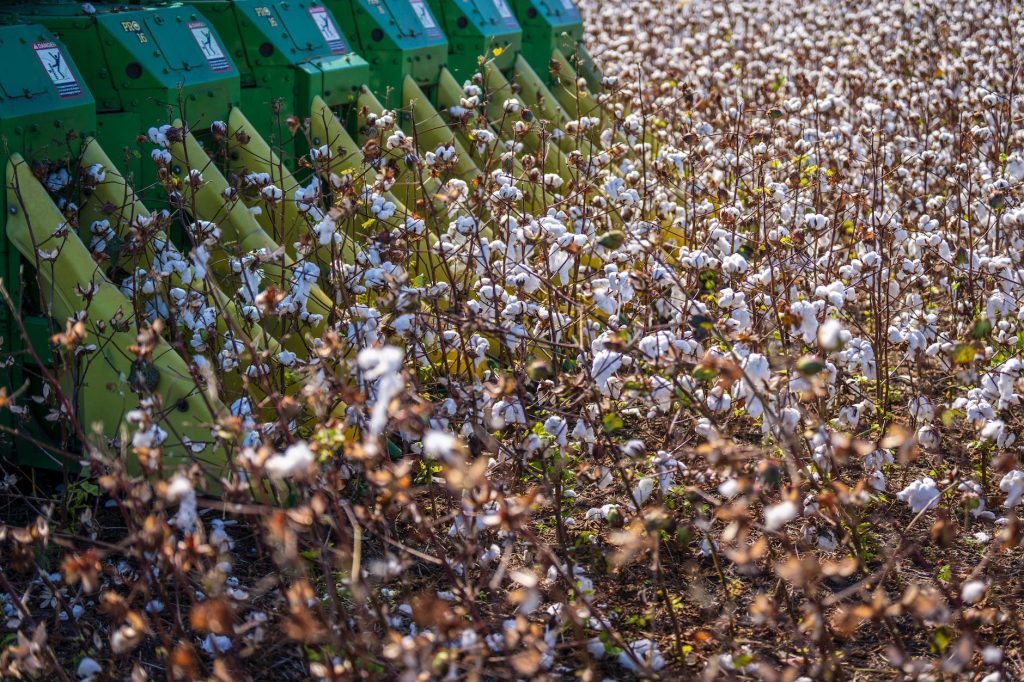In this blog Post you will know what is Cotton Production (Gossypium spp), what is Cotton, cultural Practices in cotton production, Pests and diseases of cotton and uses of cotton in Agriculture.
Table Of Contents
- Meaning Of cotton
- Cultural practices of cotton production
- Method of propagation
- Storage Method of cotton
- Pests of cotton
- Diseases of cotton
- Uses of cotton
- Revision Questions
Cotton production involves cultivating cotton plants for fiber and seed. It’s a major global industry, with countries like China, India, Nigeria and the United States being significant producers. The process includes planting, irrigating, harvesting, and processing the cotton for various uses, such as textiles and oil extraction from the seeds and many more.
READ ALSO – Rubber Production – Cultural Practices & Importance
Meaning of Cotton
Meaning: Cotton is a fibre crop and belongs to the plant family called malvaceae. It produces cotton lint, a white fiber used in textile industries.

Cultural Practices Of Cotton Production
Land Preparation: Land Preparation is the first cultural Practices of cotton, the land is cleared with cutlass or mechanically ploughed and harrowed to make it soft for planting of cotton seeds.
Varieties of cotton: Gossypium hirsittum vitifolium, ishan type, samaru, Gosspium peruvianum (meko cotton).
Climatic and Soil Requirements: Cotton requires a temperature of 25°C to 30°C, the rainfall of 65cm to 125cm per annum, abundance sunlight and very rich deep, Loamy or clay loamy soil.
Methods of Propagation: By Seeds.
Planting Date: Cotton is planted in June and July in northern Nigeria. Countries like China, India and the United States has thier various planting dates.
SEED RATE: 15 – 20kg/ha.
Planting: Four to five seeds as sown per stand. These are later thinned to two seedlings per stand at 3cm deep.
Here are the major Cultural Practices Of Cotton in Agriculture
WEEDING: This is done at regular intervals.
FERTILITY APPLICATION: Apply 125kg of super phosphate fertilizer at sewing time.
MULCHING: Mulching in cultural Practices of cotton prevents evaporation and controls erosion.
MATURITY PERIOD: Cotton matures within five to eight months after planting.
HARVESTING: Matured fruits (bolls) are handpicked and sun dried.
PROCESSING: Cotton for export is taken to a cotton ginnery after being dried. The seeds are then separated from the line which is made into bales of 180 kg either by hand or by bailing machines. The seeds are also packed for exports.
STORAGE: Cotton placed in sacked containers and kept in dry place.
PESTS OF COTTON
1. Cotton stainer (Dysdercus spp): It feeds on the content of the boll and also transmits bacteria and fungal diseases. They stain the lint.
- Control: By hand picking the insects and regular spraying with insecticides.
2. Boll Worms: The caterpillars (larvae) eat their way into the boll and spoil the lint.
- Control: This is done by Handpicking and destruction of infected plants.
DISEASES OF COTTON
1. Bacteria blight: It is caused by a bacterium. symptoms include angular spots which appear on the leaves and branches.
- Control: It is by seed dressing.
- Destroyed and burn infected plants.
- Then grow resistant varieties.
2. Leaf Curl: It is caused by a virus transmitted by an insect. Leaves become twisted, mottled, vein clearing and curl at the margin.
- Control: Plant resistant varieties and destroy infected plants by burning.
3. Dumping-off: It is caused by a fungus which is spread through the soil. Cells of seedlings become waterlogged, resulting in the death of the plants.
- Control: practice crop rotation.
- Grow resistant varieties.
Uses Of Cotton Production
The uses of cotton are in various ways, encompassing various industries and everyday products:
Below are the various uses of cotton In Agriculture.
We have various uses of cotton ranging from the uses in textiles to global trade.
- Textiles: Primary use for clothing, including shirts, jeans, dresses, and more. It’s also used for bed linens, towels, and other fabric items.
- Home Furnishings: Cotton is utilized in the production of curtains, upholstery, bedspreads, and other home decor items due to its comfort and durability.
- Medical Products: Cotton’s absorbent and breathable properties make it suitable for medical supplies like bandages, gauze, and swabs.
- Hygiene Products: Cotton is a common material in personal care items such as cotton balls, cotton pads, and feminine hygiene products.
- Industrial Products: Cottonseed oil extracted from cotton seeds is used in various industrial applications, including food products, soap, and cosmetics.
- Animal Feed: Cottonseed meal, a byproduct of cottonseed oil extraction, is used as a protein-rich supplement in animal feed.
- Oil Extraction: Cottonseed oil is used for cooking, salad dressings, and as an ingredient in various food products.
- Paper Products: Cotton fibers are used in high-quality paper production, providing strength and durability.
- Automotive Products: Cotton is used in the production of car interiors, such as seat covers and headliners.
- Construction Materials: Cotton fibers are sometimes used in construction materials like insulation due to their thermal properties.
- Art and Craft Supplies: Cotton is used in the creation of canvases, art papers, and various craft materials.
- Global Trade: Cotton is a major commodity in international trade, influencing global economic relations and contributing to the income of exporting nations.
READ ALSO – Cocoa Production in Nigeria: Importance and Processes
In conclusion on cotton production cultural practices
Cotton plays a crucial and important roles in the textile industry, supports livelihoods, and has diverse applications in various sectors, making it a valuable and versatile agricultural commodity.
Revision Questions
- State the meaning of cotton
- What are the common cultural practices of cotton?
- List the pests and diseases of cotton production
- What are the ways of controlling the pests and diseases of cotton?
- Briefly explain the method of storage of cotton
